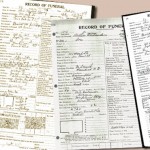- Researching your Native American ancestry can be a rewarding and meaningful experience. It can help you to learn more about your family history, connect with your cultural heritage, and even discover new relatives. It can also provide insight into the history of your people and the struggles they faced. With the right resources and guidance, you can uncover the stories of your ancestors and gain a deeper understanding of your identity.
Table of Contents
- Introduction
- How to Use DNA Testing to Trace Your Native American Ancestry
- Exploring the History of Your Native American Ancestry Through Records and Documents
- Uncovering Your Native American Heritage Through Oral Histories
- Finding Native American Ancestors Through Tribal Enrollment Records
- Using Land Records to Trace Your Native American Ancestry
- Exploring Your Native American Ancestry Through Family Stories and Legends
- Conclusion
How to Use DNA Testing to Trace Your Native American Ancestry
Tracing your Native American ancestry can be a rewarding and enlightening experience. DNA testing is a powerful tool that can help you uncover your family’s history and uncover your Native American heritage. Here is a step-by-step guide to using DNA testing to trace your Native American ancestry.
Step 1: Choose a DNA testing company. There are many companies that offer DNA testing services, so it is important to do your research and choose the one that best suits your needs. Consider factors such as the cost, the accuracy of the results, and the types of tests offered.
Step 2: Collect a sample. Most DNA testing companies will require a saliva sample, which can be collected at home. Follow the instructions provided by the company to ensure that the sample is collected correctly.
Step 3: Submit the sample. Once the sample has been collected, it must be sent to the testing company. Make sure to follow the instructions provided by the company to ensure that the sample is sent safely and securely.
Step 4: Receive the results. Depending on the company, it may take several weeks to receive the results. Once the results are received, they will be analyzed to determine if you have any Native American ancestry.
Step 5: Research your ancestry. Once you have received the results, it is important to research your ancestry further. Look for records such as birth certificates, marriage certificates, and census records to learn more about your family’s history.
By following these steps, you can use DNA testing to trace your Native American ancestry. With the help of DNA testing, you can uncover your family’s history and gain a better understanding of your heritage.
Exploring the History of Your Native American Ancestry Through Records and Documents
Exploring the history of your Native American ancestry can be a rewarding and enlightening experience. By researching records and documents, you can gain a better understanding of your family’s past and the culture of your ancestors.
The first step in researching your Native American ancestry is to identify the tribe or nation to which your ancestors belonged. This can be done by searching through records such as birth certificates, marriage certificates, and death certificates. You may also be able to find information about your ancestors in census records, military records, and land records. There’s a lot of information available in the National Archives dating back as far as 1774. A great starting point is the National Archives Native American Heritage page.
Once you have identified the tribe or nation to which your ancestors belonged, you can begin to explore the history of that tribe or nation. You can do this by researching books, articles, and other documents that provide information about the tribe or nation. You may also be able to find information about the tribe or nation in archives, libraries, and museums.
In addition to researching books and documents, you can also explore the history of your Native American ancestry by visiting the tribe or nation’s reservation. Visiting the reservation can provide you with a better understanding of the culture and traditions of your ancestors. You may also be able to find records and documents related to your ancestors at the reservation.
Finally, you can explore the history of your Native American ancestry by talking to family members and other members of the tribe or nation. Talking to family members and other members of the tribe or nation can provide you with valuable information about your ancestors and their culture.
Exploring the history of your Native American ancestry can be a rewarding and enlightening experience. By researching records and documents, visiting the reservation, and talking to family members and other members of the tribe or nation, you can gain a better understanding of your family’s past and the culture of your ancestors.
Uncovering Your Native American Heritage Through Oral Histories
Uncovering your Native American heritage through oral histories can be a rewarding and meaningful experience. Oral histories are stories passed down through generations, often through storytelling, that provide insight into the culture and history of a people. They can provide a unique window into the past, offering a glimpse into the lives of those who came before us.
Oral histories can be a great way to learn more about your Native American heritage. They can provide a connection to your ancestors and their culture, as well as a deeper understanding of the history of your people. Oral histories can also provide a sense of identity and belonging, helping to bridge the gap between the past and the present. We share some tips on conducting a successful genealogy interview in this article.
To begin your journey of uncovering your Native American heritage through oral histories, it is important to first identify the source of the stories. This could include family members, elders, or members of the community. It is also important to consider the context in which the stories were told. Was it a formal gathering or a casual conversation? Was it a story told in a traditional setting or in a more modern setting?
Once you have identified the source of the stories, it is important to listen carefully and take notes. Ask questions to gain a better understanding of the story and its context. It is also important to consider the cultural context of the story. What values and beliefs are being expressed? What is the purpose of the story?
Finally, it is important to document the stories. This could include writing them down, recording them, or even creating a video or audio recording. This will help to preserve the stories for future generations. Document facts, dates and other useful information from your interviews to follow up and supplement later. A free, printable copy of our genealogy interview form can be found here.
Uncovering your Native American heritage through oral histories can be a powerful and meaningful experience. It can provide a connection to your ancestors and their culture, as well as a deeper understanding of the history of your people. By taking the time to listen carefully, ask questions, and document the stories, you can ensure that these stories are preserved for future generations.
Finding Native American Ancestors Through Tribal Enrollment Records
Native American ancestry is an important part of many people’s heritage. For those who are interested in learning more about their Native American ancestry, tribal enrollment records can be a valuable source of information.
Tribal enrollment records are documents that are kept by Native American tribes to track their members. These records can include information such as birth dates, family relationships, and tribal affiliations. They can also provide information about an individual’s Native American heritage, including their tribal affiliation and the names of their ancestors.
In order to access tribal enrollment records, individuals must first contact the tribe in question. Each tribe has its own set of rules and regulations regarding access to their records. Some tribes may require proof of Native American ancestry, such as a birth certificate or other documentation. Other tribes may require a fee for access to their records.
Once an individual has been granted access to the tribal enrollment records, they can begin to search for information about their ancestors. It is important to note that tribal enrollment records may not contain all of the information that an individual is looking for. In some cases, the records may only contain basic information such as names and dates of birth.
In addition to tribal enrollment records, individuals may also be able to access other records such as census records, military records, and land records. These records can provide additional information about an individual’s Native American ancestry.
By utilizing tribal enrollment records, individuals can gain a better understanding of their Native American ancestry. This can be a valuable tool for those who are interested in learning more about their heritage and connecting with their Native American roots.
Using Land Records to Trace Your Native American Ancestry
Tracing your Native American ancestry can be a challenging but rewarding endeavor. Land records can be a valuable source of information for those researching their Native American heritage. By examining land records, you can uncover details about your ancestors’ lives and gain a better understanding of their culture and history.
Land records can provide a wealth of information about your Native American ancestors. These records can include deeds, surveys, and other documents related to the ownership and transfer of land. They can also include records of treaties, allotments, and other agreements between Native American tribes and the United States government. These records can provide details about the location of ancestral lands, the names of tribal members, and the dates of important events.
In addition to providing information about your ancestors, land records can also provide insight into the history and culture of the tribe. These records can include details about the tribe’s customs, beliefs, and language. They can also provide information about the tribe’s relationship with the United States government and other tribes.
Land records can be found in a variety of places, including local, state, and federal archives. Many of these records are available online, but some may require a visit to the archives in person. It is important to note that some records may be restricted or unavailable due to privacy laws.
When researching your Native American ancestry, it is important to remember that land records are just one source of information. Other sources, such as oral histories, genealogical records, and tribal records, can also provide valuable information about your ancestors. By combining all of these sources, you can gain a more complete picture of your family’s history and culture.
Tracing your Native American ancestry can be a rewarding experience. By examining land records, you can uncover details about your ancestors’ lives and gain a better understanding of their culture and history. With patience and dedication, you can uncover the story of your ancestors and gain a deeper appreciation for their legacy.
Exploring Your Native American Ancestry Through Family Stories and Legends
Exploring your Native American ancestry through family stories and legends can be a rewarding and enlightening experience. It can provide a deeper understanding of your family’s history and culture, and can help to connect you to your ancestors in a meaningful way.
Family stories and legends are often passed down through generations, and can provide valuable insight into the lives of your ancestors. These stories can provide a glimpse into the beliefs, values, and traditions of your family’s past. They can also provide a unique perspective on the history of your people and the struggles they faced.
When exploring your family’s stories and legends, it is important to remember that these stories are often based on oral tradition and may not be historically accurate. It is also important to remember that these stories may have been altered over time, and may not reflect the original intent of the storyteller.
When researching your family’s stories and legends, it is important to look for primary sources such as diaries, letters, photographs, and other documents that can provide more accurate information. It is also important to consult with experts in the field of Native American history and culture to ensure that the stories and legends are interpreted accurately.
Exploring your Native American ancestry through family stories and legends can be a rewarding and enlightening experience. It can provide a deeper understanding of your family’s history and culture, and can help to connect you to your ancestors in a meaningful way. By researching primary sources and consulting with experts, you can ensure that the stories and legends are interpreted accurately and that you gain a deeper understanding of your family’s past.
Conclusion
Researching your Native American ancestry can be a rewarding and meaningful experience. It can help you to better understand your family history and to connect with your cultural heritage. It can also provide you with a greater appreciation for the history and culture of Native Americans. With the help of online resources, libraries, and other organizations, you can begin to uncover the story of your ancestors and gain a deeper understanding of your own identity.



